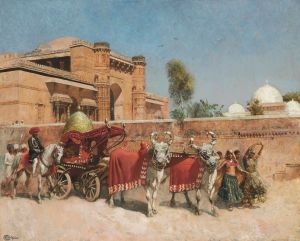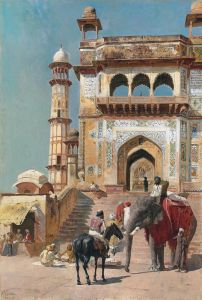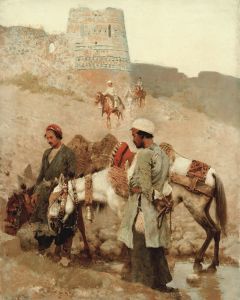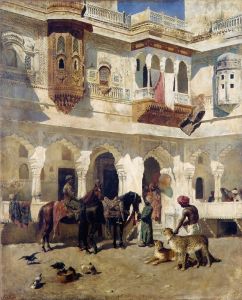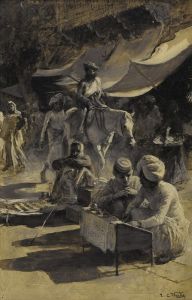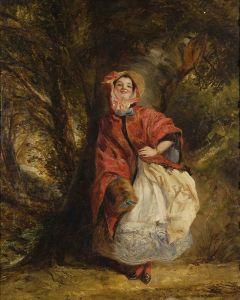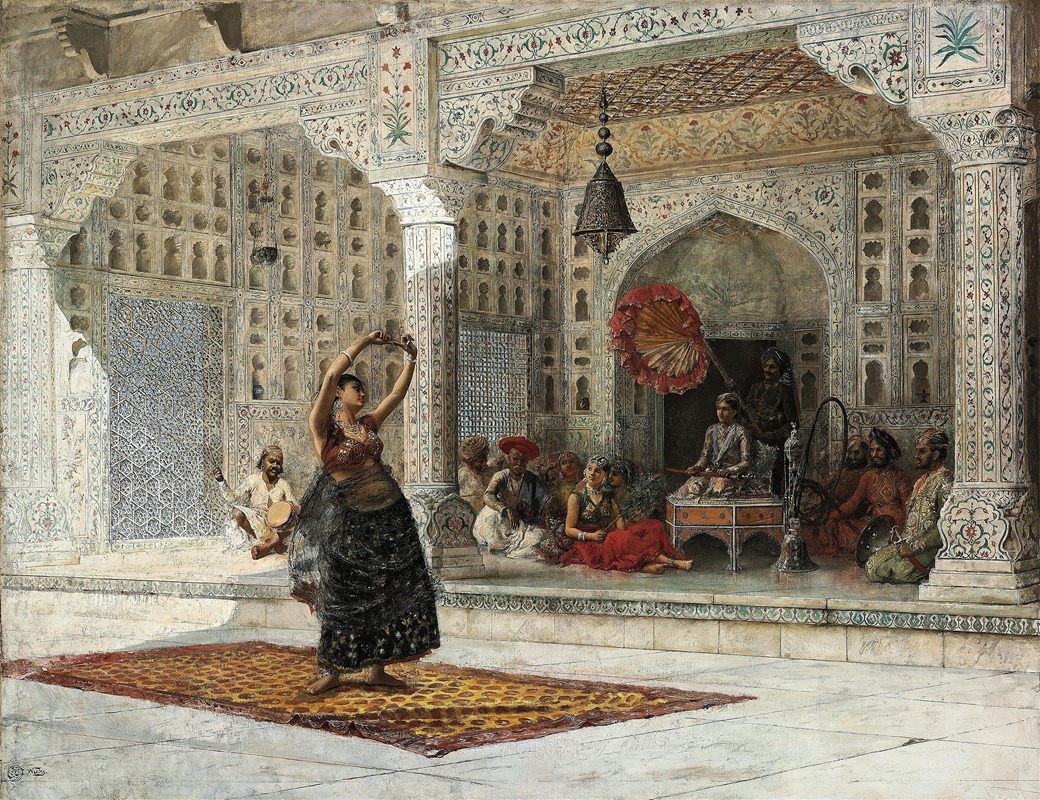
The Nautch
A hand-painted replica of Edwin Lord Weeks’s masterpiece The Nautch, meticulously crafted by professional artists to capture the true essence of the original. Each piece is created with museum-quality canvas and rare mineral pigments, carefully painted by experienced artists with delicate brushstrokes and rich, layered colors to perfectly recreate the texture of the original artwork. Unlike machine-printed reproductions, this hand-painted version brings the painting to life, infused with the artist’s emotions and skill in every stroke. Whether for personal collection or home decoration, it instantly elevates the artistic atmosphere of any space.
Edwin Lord Weeks was an American artist known for his Orientalist paintings, which often depicted scenes from his travels in the Middle East, North Africa, and South Asia. One of his notable works is "The Nautch," a painting that captures the essence of Indian culture through the depiction of a traditional dance performance.
"The Nautch" is an oil painting that showcases Weeks' skill in rendering intricate details and vibrant colors. The painting illustrates a group of Indian dancers, known as nautch girls, performing in an opulent setting. Nautch was a popular form of entertainment in India during the 19th century, involving professional female dancers who performed for both royalty and commoners. These performances were characterized by their elaborate costumes, graceful movements, and the accompaniment of musicians.
In "The Nautch," Weeks captures the dancers in mid-performance, surrounded by an audience that includes both Indian and European figures, reflecting the cultural exchanges of the colonial period. The setting is richly decorated, with ornate architecture and luxurious textiles, highlighting Weeks' attention to detail and his fascination with the exoticism of the East. The painting is a testament to Weeks' ability to convey the atmosphere of a scene, immersing the viewer in the vibrant world of Indian dance.
Weeks was part of the Orientalist movement, a genre of art that sought to depict the cultures and landscapes of the East through a Western lens. His works are characterized by their romanticized portrayal of Eastern subjects, often emphasizing the exotic and the picturesque. "The Nautch" is a prime example of this approach, as it presents an idealized vision of Indian culture that appealed to Western audiences of the time.
Edwin Lord Weeks was born in Boston in 1849 and developed an early interest in art and travel. He studied in Paris under the tutelage of renowned artists such as Jean-Léon Gérôme, who was also known for his Orientalist works. Weeks' travels to countries like Morocco, Egypt, Persia, and India provided him with a wealth of inspiration for his paintings. His works were well-received in both Europe and America, and he exhibited regularly at the Paris Salon.
"The Nautch" reflects Weeks' deep appreciation for the cultures he encountered during his travels, as well as his technical prowess as a painter. The painting is part of a larger body of work that documents his journeys and observations, offering a glimpse into the diverse and vibrant world of the 19th-century East. While Orientalist art has been critiqued for its stereotypical and sometimes inaccurate portrayals, Weeks' paintings remain valuable for their artistic merit and historical significance.
Today, "The Nautch" and other works by Edwin Lord Weeks can be found in various museums and private collections, where they continue to be appreciated for their beauty and craftsmanship. Weeks' legacy as an artist lies in his ability to transport viewers to distant lands and cultures, capturing moments of beauty and intrigue through his masterful use of color and composition.






